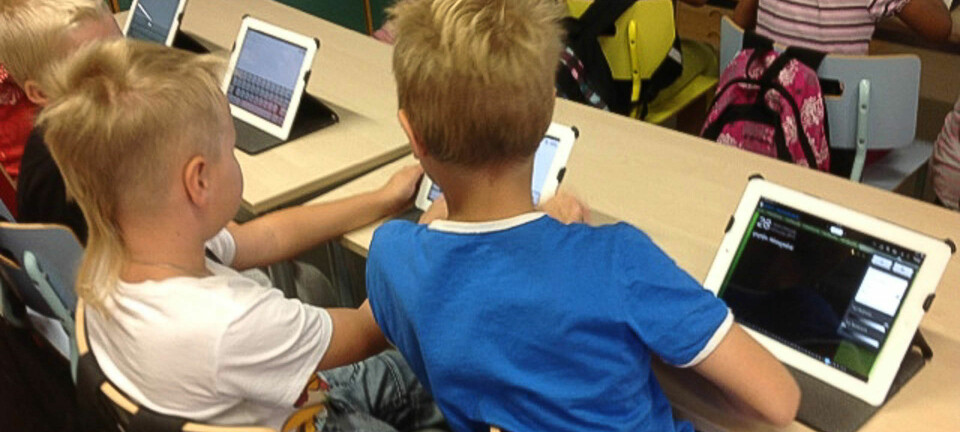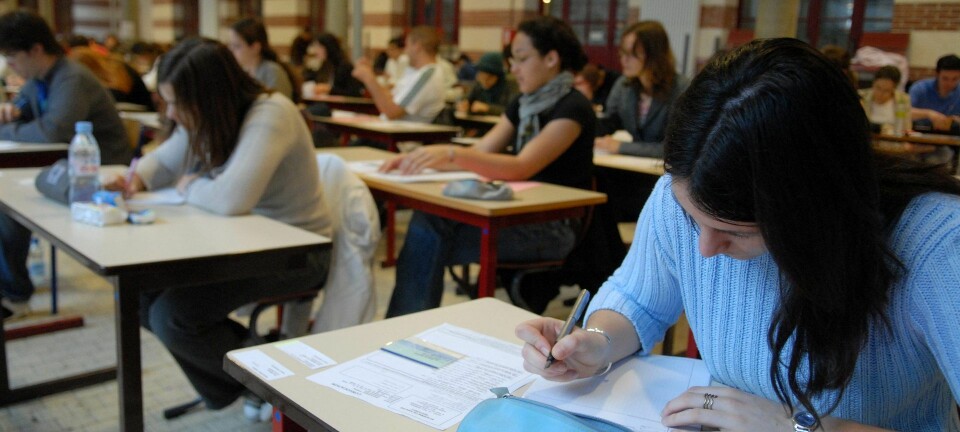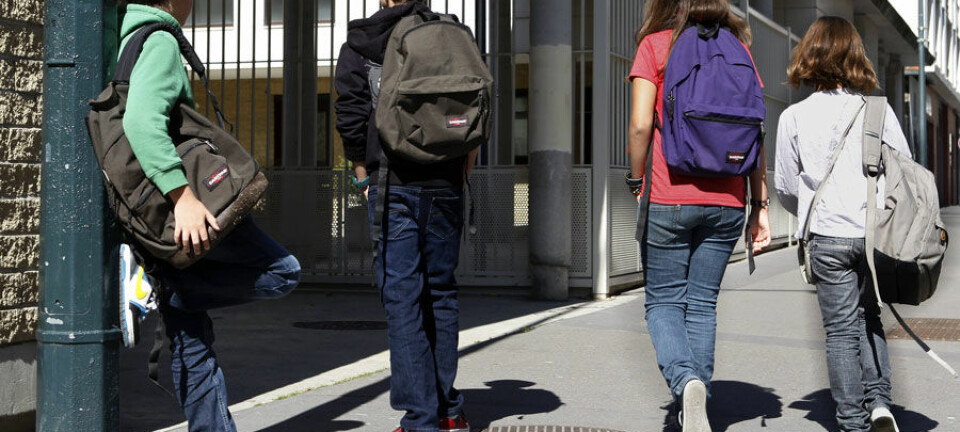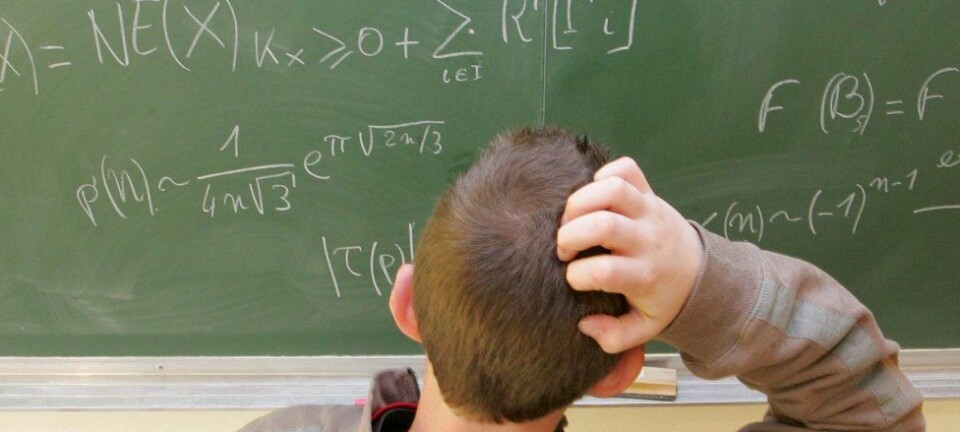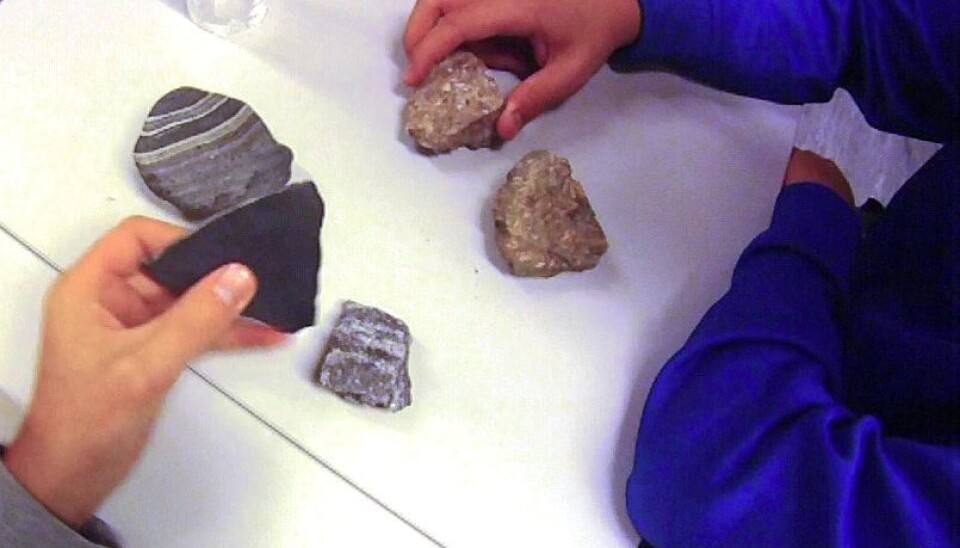
Faulty focus in school field trips
Fieldwork is supposed to help pupils learn to put their earth sciences theories into practice. Why then, do high school students struggle with practical tasks that primary school kids manage fine?
Denne artikkelen er over ti år gammel og kan inneholde utdatert informasjon.
Nearly all experts agree: It’s important for pupils to get educational experience outside the classroom.
But an increasing amount of research shows that the yields of fieldtrips are lean, given the resources spent. Why?
Research Fellow Kari Beate Remmen of the Norwegian Centre for Science Education attached cameras to the heads of teachers and high school students to find out what was really going on during a geoscience fieldtrip.
She found that there were important elements missing, which undermined the potential of learning activities outside the classroom.

The tasks assigned to the teens in their fieldwork were better designed for stimulating study of technical terms and rote memory work, encouraging very little independent thought and failing to foster links between theory and practice.
This raises the question of whether the problems high school students are given to solve in the field have the right focus.
Inadequate guidelines
After weeks of preparations the field day finally comes.
The whole class heads into the great outdoors to experience something they had been reading about. The students will collect data. They'll test research methods. Proverbial light bulbs should switch on in young brains as the students finally link theories to tangible reality.
This element of teaching the earth sciences is highly rated and international experts have even worked out research-based recommendations or guidelines on how to do fieldwork.
So what is it that goes awry when students hardly learn anything? Why can’t teachers successfully implement the recommendations of researchers?
Remmen recently presented her PhD thesis on fieldwork in geosciences ― a new subject in Norwegian high schools.
She dropped what could well be a bombshell in pedagogical research circles. Maybe it’s not the teachers who are doing things wrong. Maybe it’s the recommendations they have been given?
An education researcher, Jennifer DeWitt of King’s College London, was clearly pleased to hear Remmen's assessment.
“The same findings crop up in city after city: Teachers have trouble with fieldwork. Why? In the past years we’ve been stuck in a rut!” DeWitt said in response to Remmen’s PhD presentation.
“And then Kari breaks through. She has scrutinized the recommendations critically. This can help us make some headway,” she said.
Videoing fieldwork
Remmen used an non-traditional approach to find out what really happens when school classes are on a field trip.
“We fastened cameras to the heads of the teacher and two of the students in several classes, during preparations, while they were doing fieldwork and in their follow-up work afterwards,” she said.
Remmen was also given access to written information from the teachers and the reports handed in by the students. This enabled her to evaluate how the different teachers organized their fieldwork and how the students reacted to it.
It turned out that their approaches differed vastly, even when the teachers were actually following identical fieldwork guidelines. Far too often the kids failed to put their theoretical knowledge to practical use.
Are you smarter than a third-grader?
This was one typical geoscience problem. The high school kids were told to classify rock samples into the three basic categories according to their genesis.
Igneous rocks were one group, sedimentary a second and the third was ― as you will probably remember from school ― metamorphic rocks, bedrock that had been pressed deep down into the crust, where pressure and heat transformed it.
The video showed that the students were not up to the task. Following ample discussion, more or less successful use of geological expressions, and a great deal of frustration, the kids ended up with just two groups and made more wrong guesses than right ones.
But the assignment was by no means too difficult. Another test showed that third-graders, kids in elementary school, managed the problem fine in a much shorter time.
What is it that these nine- or ten-year-olds understood that baffled the high school students?
Didn’t know what to look for
Remmen says that the issue is whether the kids had the right mental tools for comprehending reality.
She studied the videos to see what the high school students had learned prior to the field trip. They had already practiced classifying rock samples in the classroom. It turned out that their strategy had been to compare the rock samples with pictures in their textbooks.
When they got out in the field they tried to remember rocks and their names from the books. But the rocks they found were different in colour and pattern, so they tended to botch the job.
“They didn’t knew what they were supposed to look for. So they failed and the theme of rock types became little more than a tedious list of names that they found terribly boring,” says Remmen.
The third-graders, on the other hand, were given easy signs to look for: Rocks with spotted patterns were volcanic or igneous. Rocks with layers were sediments that had been pressed together, while ones with wavy striped patterns were metamorphic.
This gave them a tool for understanding what they were seeing without having the name or the proper geological terms.
Right and wrong
Rammen thinks another important factor is the type of assignment that is given to the kids when they are sent out to do fieldwork.
In many cases the task involves factual problems with right or wrong answers. These encourage students to memorise questions from the curriculum.
In one of the classes that Remmen studied, the students were issued 30 questions that needed correct answers. The kids were not expected to pose their own questions or collect data in the field. This method failed to stimulate a deeper interest or develop much understanding.
Another teacher had taken high school kids to Oslo’s new Opera House and given them the following assignment: Which type of rock would you have used to build the Opera House, and why? There was no pat answer to the question. The kids had to consider several types of rock and provide reasons why certain ones would be more suitable than others.
The video material showed that the kids got more involved and made independent studies and evaluations. Remmen thinks that more of this type of open assignment, which gives students the opportunity to ponder several alternative solutions, really helps give fieldwork greater educational payback.
She now suggests new recommendations for teachers who plan to take their classes out in the field.
Wrong focus?
“We haven’t had sufficient focus on good assignments when we teach teachers,” says Remmen.
She thinks the recommendations to teachers should include advice on how to devise good assignments that stimulate students to think logically, make interpretations, evaluate opinions and perspectives, and formulate conclusions.
“These are assignments that Norwegian students don’t necessarily have much training to try to solve,” says Remmen.
-------------------------
Read the Norwegian version of this article at forskning.no
Translated by: Glenn Ostling








